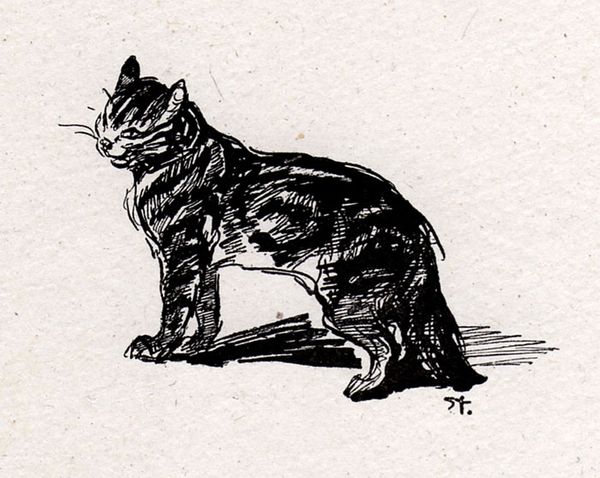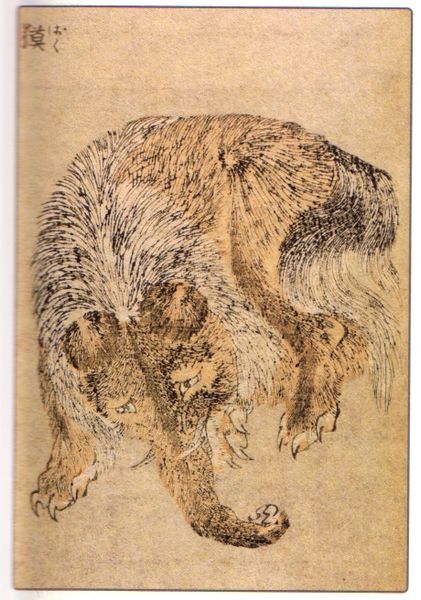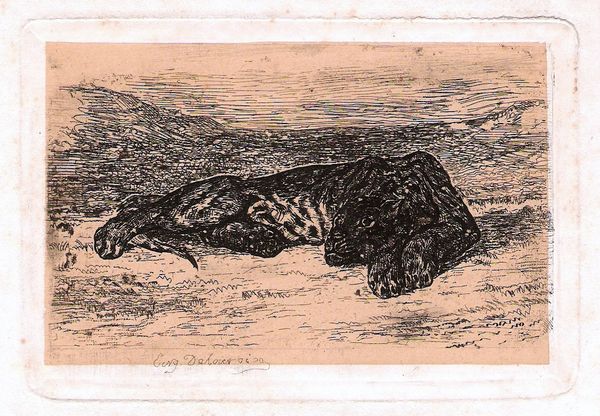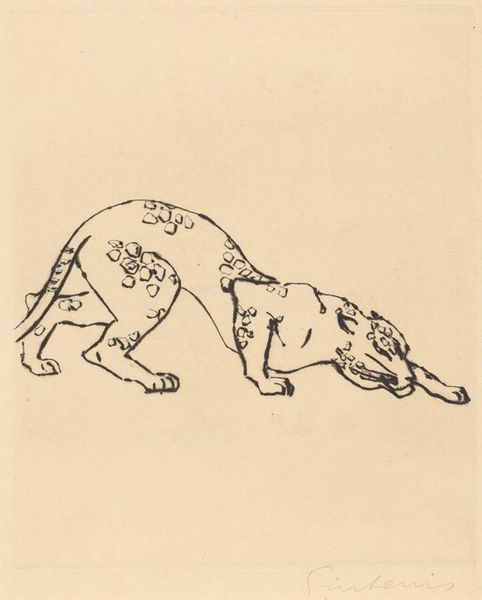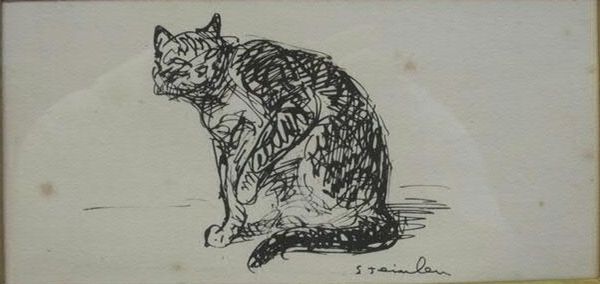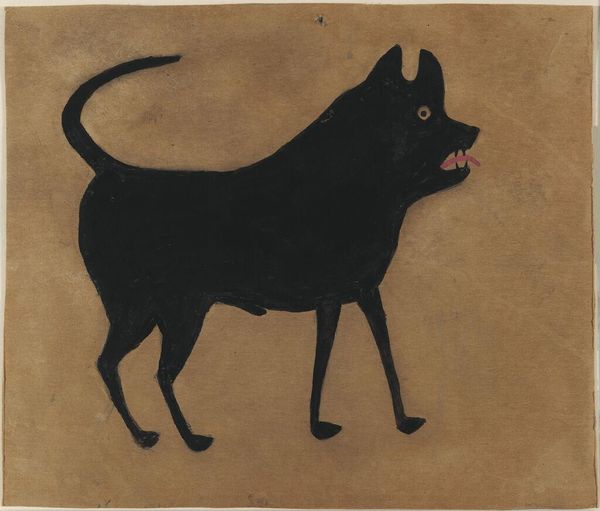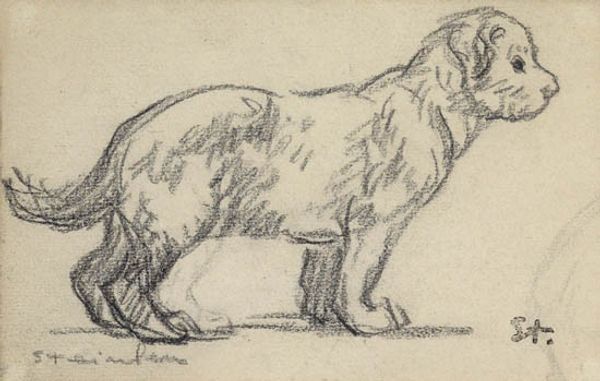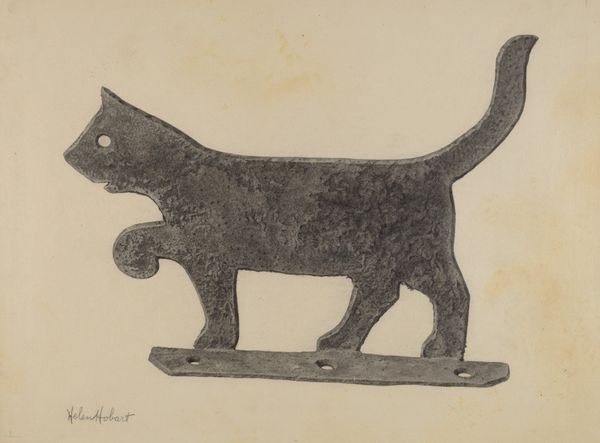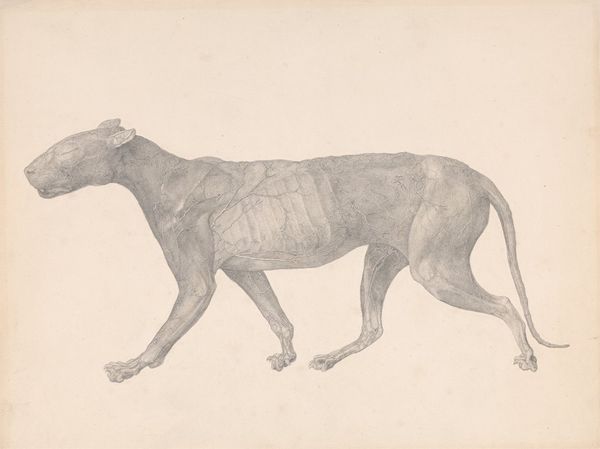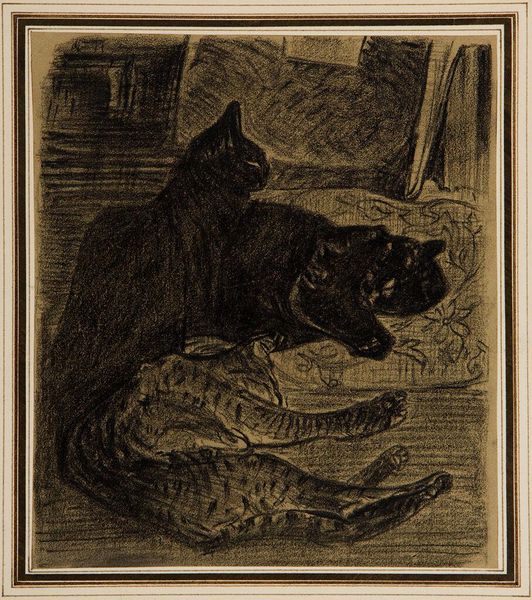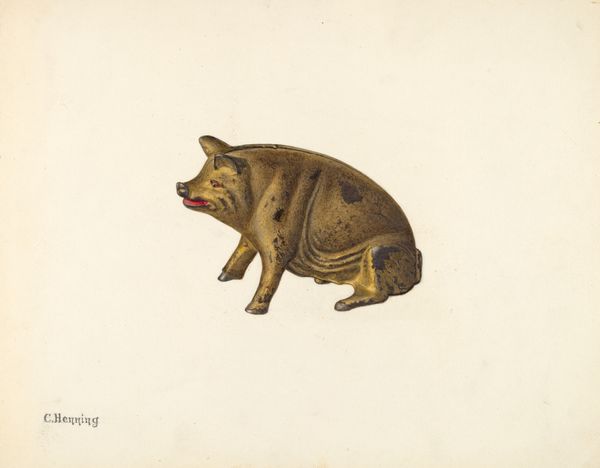
drawing, ink, pen
#
drawing
#
ink drawing
#
impressionism
#
pen sketch
#
figuration
#
ink
#
pen
Copyright: Public domain
Curator: Welcome. Here we have a drawing entitled "Cat" by Théophile Alexandre Steinlen, rendered in ink and pen. Editor: The immediate impression is one of restrained power. A certain quiet watchfulness comes across. There's a beautiful economy of line, wouldn’t you agree? Curator: Precisely. Observe how Steinlen captures the essence of the feline form with remarkable efficiency. Note the deliberate use of hatching to define the contours and musculature, creating volume and depth with minimal strokes. Editor: Considering Steinlen's background as a socialist and his depictions of the working class, do you think there's something more to it? Perhaps a subtle commentary on the place of domestic animals within a particular social stratum, like the bourgeoise and their house pets? Curator: That’s an intriguing interpretation. It's certainly possible to read socio-political context into it, but I think there's already something interesting with the lines themselves. They are so direct. Editor: Yes, and in this light, could the cat, then, be a symbol of resilience, or a witness to the daily struggles Steinlen often portrayed? Perhaps it embodies a certain silent solidarity with the marginalized? The domestic sphere after all often holds space for important exchanges on broader socioeconomic matters. Curator: It's fascinating how Steinlen uses these rapid lines to render form, texture, and also that subtle quality of domesticity you mention. The background's emptiness only heightens our focus. Editor: And speaking of context, we must consider that the feline figure recurs quite a bit throughout art history in general, taking on diverse symbolic registers within different eras and movements. Cats can mean any number of things. Steinlen’s choice becomes charged when placed in conversation with artistic precedent. Curator: Of course. By the interplay of these pen marks he renders weight, light, the way the cat balances...a real feat, to convey this in a glance. What starts out so basic in execution opens into an opportunity for so much analysis. Editor: It reminds us how art constantly exists within—and challenges—ongoing dialogues that engage gender, class, identity, and the critical, historical examination that comes along with it. Curator: Ultimately, this sketch reveals a captivating dialogue between observation and interpretation, leaving us to ponder both the intrinsic qualities and potential narratives interwoven within it. Editor: Indeed, a testament to how a simple ink drawing of a cat can reflect and refract such complexities.
Comments
No comments
Be the first to comment and join the conversation on the ultimate creative platform.
